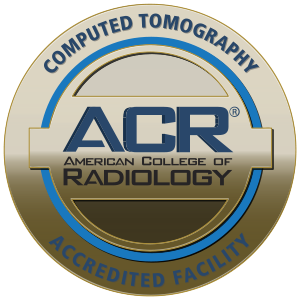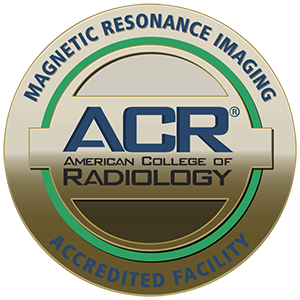Magnetic Resonance Imaging (MRI) is a powerful diagnostic tool used in modern medicine. However, there are many misconceptions about this technology. Here, we’re debunking five common myths about MRI scans to help you better understand this important imaging technique.
Choose Clarity, Choose Lumina: We provide high-quality imaging and diagnostics that provide clarity about your health. Connect with our team today to learn more.
The Facts Behind Five Common MRI Myths
MRI Myth #1: MRIs and CT scans are essentially the same thing
This is a common misconception, but MRI and CT scans are quite different in their technology and applications. The biggest difference (and a myth of its own) is that MRI machines do NOT use radiation as part of their process. We’ve discussed these differences before, but here’s a quick refresher.
MRI (Magnetic Resonance Imaging)
- Uses strong magnetic fields and radio waves to create detailed images of organs and tissues
- Excellent for imaging soft tissues, such as the brain, spinal cord, muscles, and ligaments
- Does not use ionizing radiation
- Typically takes longer than a CT scan (20-60 minutes)
- Provides better contrast between different types of soft tissue
CT (Computed Tomography) Scan
- Uses X-rays and computer processing to create cross-sectional images of the body
- Better for imaging bones, lung tissue, and detecting bleeding in the brain
- Involves exposure to ionizing radiation
- Generally quicker than MRI (usually completed in 5-10 minutes)
- Provides better detail of bony structures
While both are valuable diagnostic tools, they serve different purposes and are often used in complementary ways depending on the specific medical condition being investigated.
MRI Myth #2: You can’t have an MRI if you have any metal in your body
While it’s true that MRI machines use powerful magnets, not all metal is prohibited in the MRI environment. In fact, many modern medical implants are MRI-safe or MRI-conditional. Over the years many patients have been told they couldn’t have an MRI because of a certain implant. It’s important to remember that many previously ‘unscannable’ implants can now be safely scanned.
However, it’s still crucial to inform your doctor and MRI technologist about any metal in your body, including:
- Pacemakers or implanted defibrillators
- Artificial joints
- Dental implants
- Aneurysm clips
- Metal plates, screws, or rods
The medical team will determine whether it’s safe for you to have an MRI based on the specific type of metal and its location in your body. In many cases, adjustments can be made to ensure a safe scan.
MRI Myth #3: All MRI machines will make me feel claustrophobic
While older MRI machines often invoke images of large, noisy, and enclosed tubes capable of triggering claustrophobia in some patients, modern technology has made significant strides in addressing this issue. Some of the more patient-friendly designs of today include:
- Open MRI machines: These have open sides, reducing the feeling of confinement
- Wide-bore MRI scanners: These have a larger opening, providing more space
- Short-bore scanners: These are shorter in length, so parts of the body may remain outside the machine during certain scans
Lumina Imaging, for instance, uses the MAGNETOM Altea model—an open-bore design to enhance patient comfort during the scanning process. Lumina implements other features as well, such as headphones with music, windows in the scanning room that allow you to see outside, and ceiling murals to help patients relax during the procedure.
MRI Myth #4: You need 3 Tesla magnets to ensure a high-quality scan
While 3 Tesla (3T) MRI machines are more powerful and can produce detailed images, they are best used for small detail tasks as they may produce image artifacts when imaging larger areas.
1.5T MRI scanners have been the standard in clinical imaging for decades and provide excellent image quality for most applications. They offer larger patient areas increasing the comfort for those who are claustrophobic or larger in size, have faster scan times, and are less sensitive to certain artifacts or implants.
Meanwhile, 3T MRI scanners can be more susceptible to certain types of implants. There are specialized applications that may necessitate 3T MRI scanners, which may provide more detailed images of small structures or subtle abnormalities.
In many cases, a 1.5T scanner provides all the necessary information for accurate diagnosis and treatment planning. Your referring physician and radiologist will determine which type of scanner is most appropriate for your specific needs. At Lumina, we always clarify with the ordering provider if a 3T machine is preferred for certain exams.
MRI Myth #5: You need to go to a major medical facility or hospital to ensure image quality for MRI
While major medical facilities and hospitals often have MRI services, many independent imaging centers (such as Lumina) offer high-quality MRI scans at more affordable prices and with greater scheduling flexibility.
Factors that contribute to high-quality MRI scans include:
- Equipment quality and maintenance: Many independent centers invest in state-of-the-art equipment and rigorous maintenance schedules.
- Technologist expertise: Skilled MRI technologists are crucial for obtaining high-quality images, regardless of the facility type.
- Radiologist interpretation: Board-certified radiologists can provide expert interpretation at both hospital-based and independent imaging centers.
- Accreditation: Look for centers accredited by organizations like the American College of Radiology (ACR), which ensures high standards of image quality and patient care.
Many patients find that independent imaging centers offer high-quality scans with added benefits like easier scheduling, lower costs, and a more personalized experience.
Lumina Proudly Dispels Common MRI Myths
By debunking these five common myths about MRI scans, we hope to provide a clearer understanding of this valuable diagnostic tool. When you need an MRI, Lumina believes you should have the power and information to make the choice that best aligns with your vision for your healthcare. We’re always free to discuss any concerns or questions with your healthcare provider to ensure you receive the most suitable and high-quality care.
With a flat-free pricing structure that adds transparency for patients, employers, and benefits providers, Lumina believes in making medical diagnostics more affordable and accessible. We put the patient experience front and center with comfort-adding features in four nearby locations in Northeast Ohio. We make it simple for you to get the high-quality MRI and CT scans you require, for less than hospital prices. And because we’re integrated with MyChart, your doctor can see the results within 24 hours.
Connect with our team today to learn more or to arrange your next medical imaging appointment.






